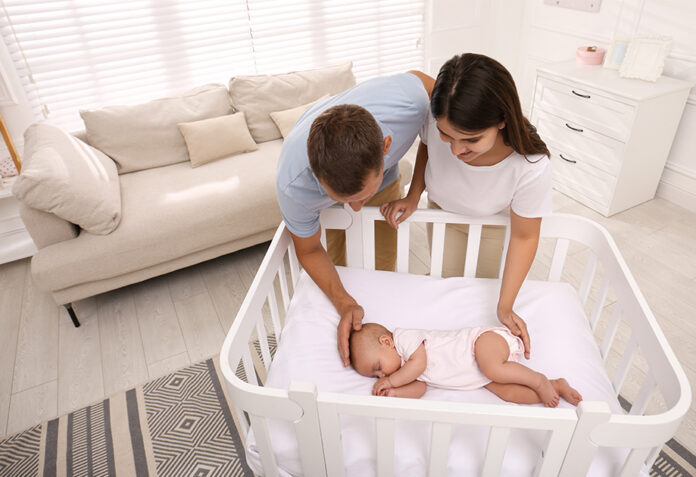As a new mom, you now have the responsibility to take care of another human, your little one, The Newborn Safety Manual. The question may arise, “If they can’t walk or crawl, how can they be in danger?” Well, there are still a few ways an accident can happen, and it might seem overwhelming, but don’t worry These are The Newborn Safety Manual
Road Safety
Well, let’s talk about the drive home and the safety measures related to the car.
“Car seat” is an absolute essential, so let’s talk about it.
Choosing the right type of car seat can make all the difference, Infant car seats are rear-facing and suited for babies from birth to roughly 12 months. Convertible car seats are safe to use from birth and can be switched to forward-facing seats as the infant grows. Make certain that the car seat you select is appropriate for your child’s age, weight, and height.
Install the car seat appropriately. Follow the manufacturer’s instructions and secure the seat to the car. Make sure the car seat isn’t overly reclined. Newborn car seats should be positioned in the back seat, facing backward. Car seats are safest in the back. The center back seat is the safest.
The car seat’s straps and buckles should be at armpit level, and the straps should fit securely over the baby’s shoulders. Try to avoid dressing your baby in bulky apparel, as it may interfere with the car seat straps.
Baby falls
Another aspect of safety for newborn babies is “the baby falling.” Well, little ones like to move and roll a lot, which sometimes leads to them falling from a height or hitting their head somewhere or other.
- Supervision is the key, never leave the baby unsupervised when they are on a higher surface like a changing table, bed, or even a sofa.
- Secure the baby in a carrier, or keep pillows nearby to keep them from falling over. Safety straps on high chairs, swings, and other infant gear like safety gates and padding really come in handy to prevent any mishaps.
- Try avoiding holding your baby or cradling them in an unstable place or while standing on a high surface such as a chair or ladder, anywhere where you will lose balance and trip over, and it’s always best to hold them with both arms.
SIDS
SIDS (sudden infant death syndrome) might be scary, but it can be prevented.
The risk of SIDS is reduced if your infant rests on their back on a firm mattress. Don’t allow your infant to lie on a pillow, sheepskin, comforter, or stuffed animal. It is recommended that you share a room with your infant, but not a crib.
Sharing a bed with your infant, also known as co-sleeping, is associated with an increased risk of sudden infant death syndrome (SIDS) as well as accidental asphyxia, strangulation, and entrapment. It is especially important not to sleep with your infant if they are exceedingly young, small, or were born prematurely, or if you use alcohol or drugs. So, you can place the cradle, bassinet, or play yard close to your bed.
If you feed your infant in bed, place them back in their crib before retiring. If you believe you may fall unconscious with them in your bed, remove any pillows, blankets, or other bedding that could suffocate them.
Check that their mattress is flat, firm, and the right size for their crib or bassinet, and that their crib is in excellent condition with no broken or missing parts.
Your infant may be wrapped in a swaddle or wearable blanket, but no additional blankets should be placed on or around them. No crib bumpers or loose linens should be used in their crib.
Permit your infant to slumber in unapproved sleep products. Included are infant loungers, car seats, strollers, bouncers, and swings. If your infant falls asleep in one of these, transfer them to their crib or bassinet as soon as possible.
Some other precautions
- Always support the head and neck of your infant when picking them up or holding them.
- Keep coins and buttons out of the reach of a newborn, as they offer a suffocation risk. Keep an eye out for any small items that might fall off your clothes or accessories.
- Keep your house free of potential risks such as hanging cords or wires, sharp objects, and toxic materials. Install safety gates and locks on cabinets and compartments to prevent your infant from gaining access to potentially hazardous items.
- Always measure the water’s temperature with your hand or elbow before placing your infant in the tub. The water temperature should be tepid but not hot. Never leave your infant alone in the bathtub.
- Avoid exposing your child to smokers and smoking areas. Secondhand smoke exposure increases the risk of respiratory infections, asthma, and sudden infant death syndrome.
- Carefully consider who you allow to carry or care for your infant. Allow only trusted family members or caregivers who have received the proper training to handle your infant, and make sure they are aware of the Newborn Safety Manual.




